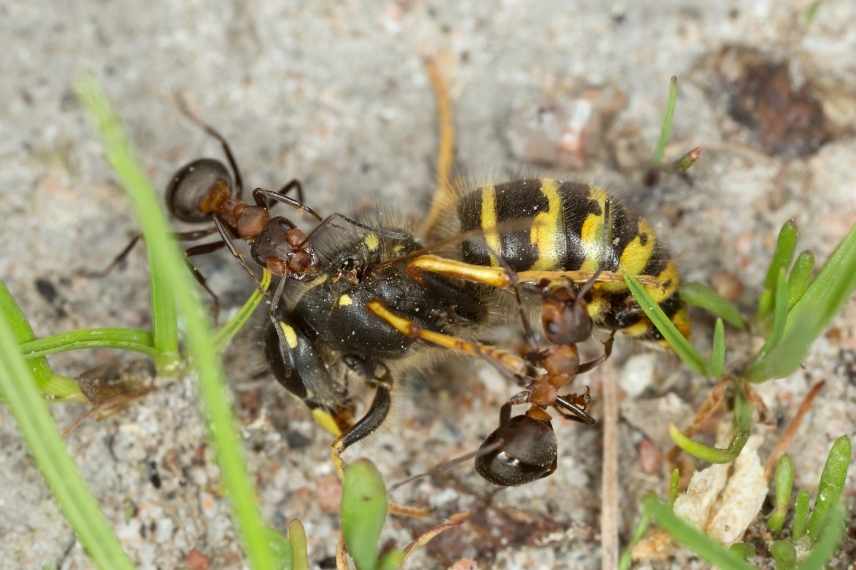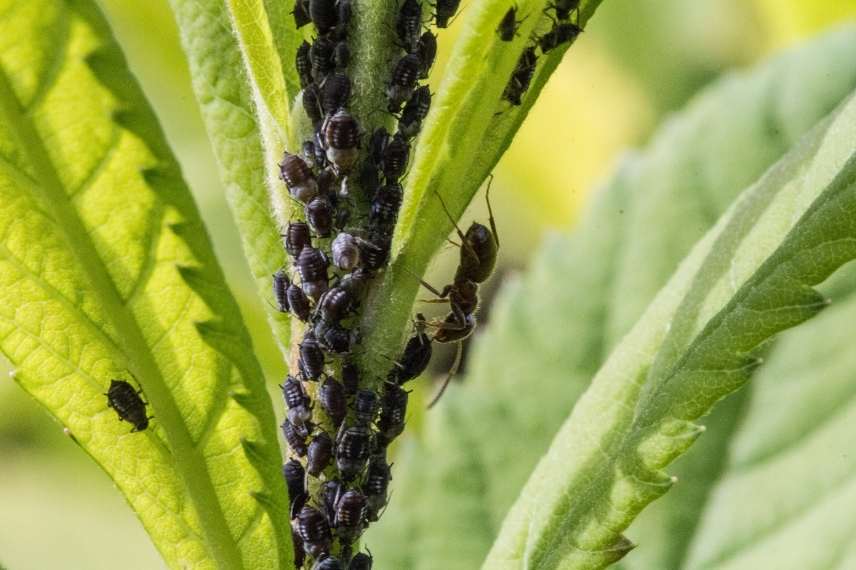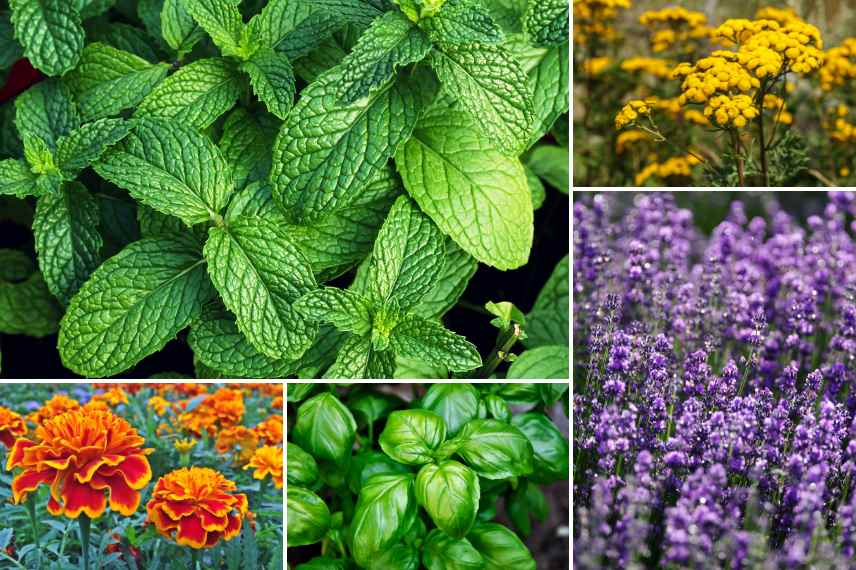
Ants in your pots or at the base of your plants: what should you do?
Should we control the various ants visible on our plants?
Contents
Whether in the garden, at the base of plants grown in the ground or on balconies and terraces in potted plants, it’s not uncommon to see a few ants busily at work. Naturally, these insects that live in organised colonies tend to raise questions: should we consider them as harmful pests that must be eradicated at all costs to protect our plants? Or can ants be tolerated for their role in the ecosystem? Understanding their way of life and function in nature often allows us to see ants in a different light – usually a far more benevolent one.
Discover the ecological role of ants to better assess risks to your potted or in-ground plants, and find natural repellent solutions to deter them without causing harm.
Ants: Allies or Enemies to Fight?
Helpers or foes to eliminate? That is the question gardeners may ask when they spot ants quietly moving about in their perennial plants, annuals or vegetable pots, or at the base of those grown in open ground. And the answer isn’t clear-cut. Indeed, these social insects, much like bees or wasps, play a role in the ecosystem – provided they don’t proliferate excessively.
Useful to the Ecosystem
The 200+ ant species living in our territory and gardens play a vital role in natural environments. And in several ways. Firstly, they consume all dead insects they find, even organic debris, acting as decomposers. Others directly attack the larvae of many pests or spiders. Indeed, ants need protein and sugar to survive. Sugar they find, among other sources, in the nectar of certain flowers. This diet means plants hold no interest for them.
Ants also help maintain living soil by aerating it with their tunnels. Similarly, they contribute directly or indirectly to seed dispersal and plant pollination.

Ants feed on dead prey
Some Nuisances Too
That said, they can become problematic. Once they establish colonies at the base of plants or in pots, their activity can harm roots and disrupt soil structure. Similarly, they can be troublesome when they encourage the proliferation of parasites like aphids or scale insects. Indeed, these ants farm and protect these pests in exchange for the honeydew they obtain by “milking” them.
So, ants aren’t inherently harmful, but their presence can upset the natural balance around plants.
Why do ants settle around plants?
There are several reasons why ants may choose to take up residence in pots or containers, or even in vegetable patches or at the base of our plants. The first reason is not without merit: ants hovering around plants are often indicators of an infestation of aphids or scale insects. If they are present, it’s because they will find sweet exudates, namely honeydew.

Ants farm and protect aphids and scale insects, which can be harmful to plant growth
Additionally, in a pot or container, the substrate is usually drier, looser, or sandier, which, for an ant, is an ideal nesting ground. To this perfect soil, add warmth and relative tranquillity, as there is less microfauna present. No predators in sight to disturb the colony. Moreover, by establishing their colony in a pot or at the base of a plant, they benefit from shelter against bad weather thanks to the foliage.
Finally, if the substrate has been enriched with compost, they can easily find decomposing organic matter there.
What risks for plants?
While the presence of ants may seem harmless at first glance, it can directly or indirectly impact plant health. This largely depends on the colony’s density, the growing environment (in pots or open ground), and coexistence with other organisms, particularly pests.
The first impact, often underestimated, lies in their symb symbiosis with aphids and scale insects. By protecting them from potential natural predators like ladybirds or lacewings, they encourage their presence and promote their reproduction. In a balanced natural medium, aphid infestations often disappear on their own within 2 or 3 weeks. However, scale insects prove more resilient. The partnership between ants and sap-sucking insects increases pressure on plants, slowing their growth and weakening them. Meanwhile, foliage may become deformed, and sooty mould can develop.
In pots and containers, the galleries dug by ants can disturb the root ball. They displace the substrate, create air pockets, and compromise the plant’s stability. Over time, and if ants are very numerous, this can lead to water stress, poor nutrient assimilation, or even the decline of certain sensitive species.
Natural and effective solutions to keep them away
If ants become too numerous around your plants, whether in pots or in the ground, and hinder their growth, you can implement a few effective solutions, all while remaining natural and non-lethal:
- Physical barriers using natural repellents can help keep ants away from plants. Among the most common natural defences are coffee grounds, cinnamon powder, chalk, lemon peel, cloves… all of which emit strong scents that ants dislike. Note that diatomaceous earth is also effective, but it kills ants, so it should be reserved for insects like fleas or red poultry mites.
- Targeted watering can also help dislodge ants, especially in pots and containers.
- Repotting the plant if possible. This is a simple solution, provided you thoroughly remove the old substrate by rinsing it with water.
- Using repellent plants around pots. Simply plant mint, lavender, basil, tansy, marigolds, garlic, or create infusions from some of these plants to spray.

Ant-repellent plants: clockwise from top left, mint, tansy, lavender, basil, and marigold
- The use of essential oils can be considered, but sparingly. Peppermint or lavender essential oils work best.
- Subscribe!
- Contents































Comments